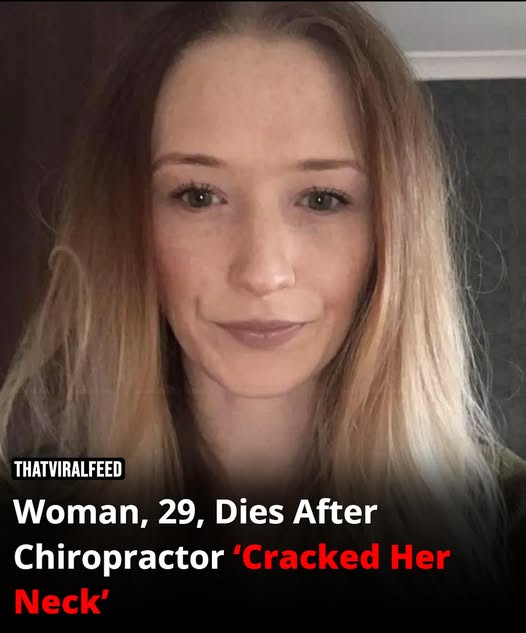A shocking incident has come to light following the death of a young woman after undergoing a neck adjustment by a chiropractor. Her case is being closely examined by legal and medical professionals alike, raising serious questions about standards of care, risk assessment, and the responsibilities of practitioners in alternative medicine fields.
The Victim and Her Injury
The woman, aged 29, first felt something go wrong during a workout session, when she allegedly heard a crack in her neck. Soon afterwards, she developed a pressing headache and discomfort. She visited a hospital emergency department, and medical staff recommended further investigation. Among the proposed procedures was a lumbar puncture, intended to rule out a hemorrhage. Despite that advice, she left the hospital against medical recommendation and sought relief through chiropractic treatment.

The Chiropractic Treatments
During the weeks following her hospital visit, she underwent a series of chiropractic neck manipulations. The practitioner claimed to assess her condition, but did not request or review any prior medical records. At one session, she reported sudden symptoms: dizziness, visual disturbances, nausea, tingling, and difficulty speaking. Although these are concerning signs, the chiropractor reportedly performed a rapid assessment (a “FAST” test for stroke symptoms), which showed a negative result. Despite advice from the chiropractor to go to hospital, she declined, returning home instead. Later that same day, paramedics attended but diagnosed her symptoms as migraine-related. The next day, her condition worsened sharply. Emergency services intervened, and she was rushed to the hospital, where imaging revealed a significant tear in an artery in her neck, consistent with a vertebral artery dissection. Tragically, she passed away two days later.
Coroner’s Findings
At the inquest, the coroner determined that the death resulted from a combination of the effects of chiropractic treatment and an underlying arterial injury. The coroner criticized the practitioner for failing to obtain or examine her medical records — despite being informed about her recent hospital attendance. That failure, the coroner noted, may have prevented detection of her heightened vulnerability to arterial dissection. In the official report, the coroner issued recommendations urging changes in practice guidelines for chiropractic professionals.
Underlying Conditions and Risk
Posthumous investigations revealed the woman had markers of a connective tissue disorder, which increased her susceptibility to arterial tears. She also had a history of migraines and joint hypermobility—factors that, collectively, make high-force manipulations in the neck more dangerous. In this case, what might ordinarily have been seen as a routine adjustment became fatal, because the underlying structural vulnerability was not identified nor disclosed.
Broader Implications for Practice
This case is not isolated. Similar reports, though rare, have long sparked debate about the safety of cervical manipulations. Some experts argue that practitioners must adhere to strict protocols: reviewing a patient’s medical history, screening for risk factors, obtaining imaging when indicated, and ensuring referrals to medical care if warning signs emerge. This tragic outcome underscores the need for stronger standards, especially where high-velocity neck adjustments are considered.
The Importance of Informed Consent
One critical lesson here is that patients must be fully informed about potential risks—even those considered remote. Consent is more than a signature; it requires understanding of one’s medical context and the possible complications of a procedure. In this case, without a full medical review, consent may not have been fully informed.

Conclusion
The death of this young woman following chiropractic treatment is a sobering reminder that even procedures perceived as benign carry risks—particularly when patient history and warning signs are not carefully evaluated. Her story spotlights the urgent need for tighter oversight, better protocols, and improved communication within healthcare and alternative therapy fields. It also reminds patients and providers alike that precaution and awareness are critical when dealing with interventions around the neck and spine.

















